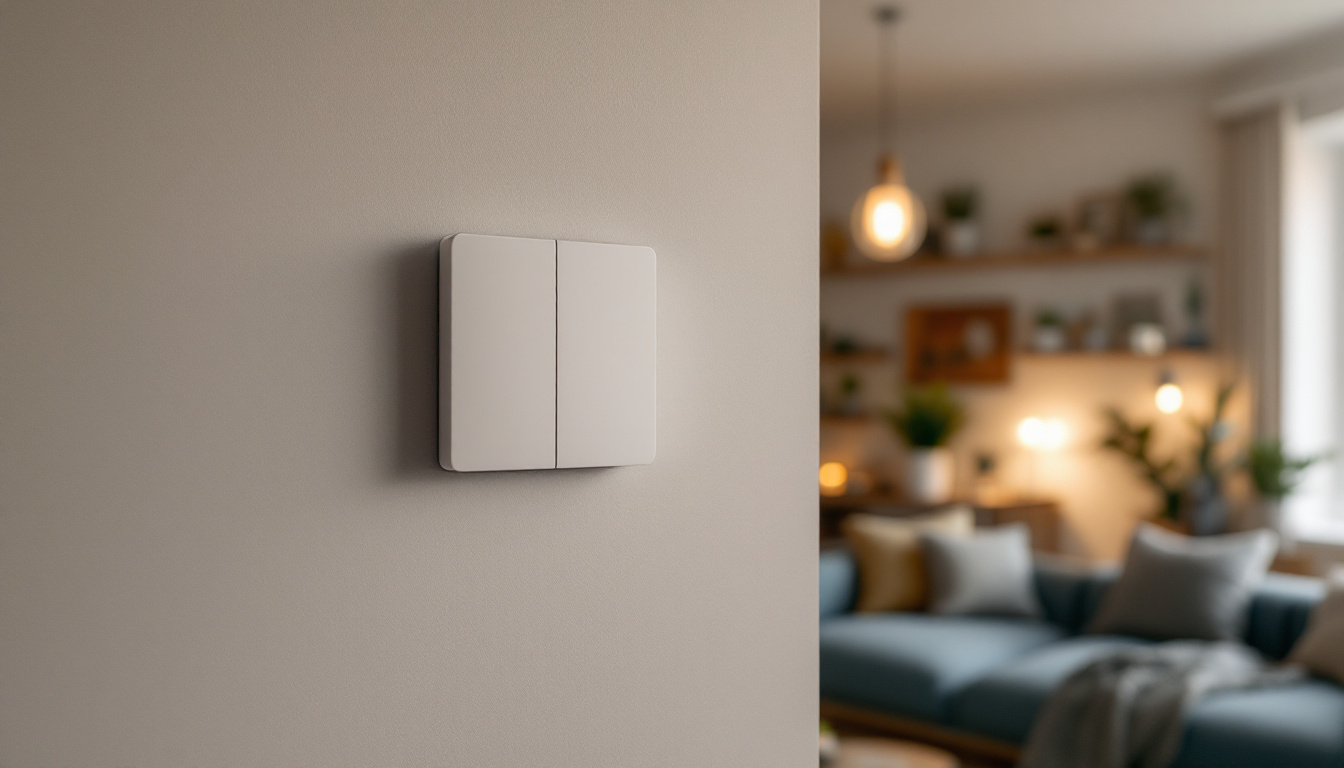
In the ever-evolving world of lighting technology, LED garage lighting stands out as a beacon of efficiency and innovation. For lighting contractors, understanding how to future-proof lighting projects is essential for ensuring long-lasting and adaptable installations. This article delves into the key strategies and considerations for implementing LED lighting solutions that not only meet current demands but also anticipate future needs.
LED lighting has transformed the way garages are illuminated, offering numerous benefits over traditional lighting options. From energy efficiency to longevity, LEDs are quickly becoming the preferred choice for both residential and commercial applications.
One of the most compelling advantages of LED garage lighting is its energy efficiency. LEDs consume significantly less power compared to incandescent or fluorescent bulbs, leading to reduced electricity bills. This is particularly important for garage spaces that may be used frequently or left on for extended periods.
Moreover, the lower energy consumption translates to a smaller carbon footprint, making LED lighting a more environmentally friendly choice. As sustainability becomes a priority for many homeowners and businesses, contractors can leverage the energy-saving benefits of LEDs to attract eco-conscious clients. In fact, many local governments and utility companies offer rebates or incentives for switching to LED lighting, further enhancing the financial appeal of this upgrade.
LEDs are renowned for their impressive lifespan, often lasting up to 25 times longer than traditional bulbs. This longevity means fewer replacements and reduced maintenance costs, a significant advantage for contractors and clients alike. In a garage setting, where lighting fixtures are subject to dust, moisture, and temperature fluctuations, the durability of LEDs is particularly beneficial.
Additionally, the robust construction of LED fixtures makes them resistant to shocks and vibrations, further enhancing their suitability for garage environments. This durability ensures that installations remain functional and aesthetically pleasing over time. Furthermore, many LED lights are designed with advanced heat dissipation technology, which helps maintain optimal performance and prevents overheating, thereby extending their operational life even further. This makes them an ideal choice for garages that may experience extreme temperature variations, ensuring consistent lighting performance regardless of external conditions.
Beyond their practical advantages, LED garage lighting also offers a variety of design options. Available in numerous styles, colors, and brightness levels, LEDs can be tailored to meet the specific needs and preferences of the user. Whether you prefer bright, white light for detailed tasks or softer tones for a more inviting atmosphere, there’s an LED solution that fits the bill. This versatility allows homeowners to create a functional and visually appealing garage space that suits their lifestyle, making it not just a storage area but an extension of their home.
To future-proof a lighting project, flexibility in design is crucial. This involves considering various factors such as the layout of the garage, potential changes in usage, and advancements in lighting technology.
Every garage is unique, and understanding the specific needs of the space is vital for effective lighting design. Factors such as the size of the garage, the height of the ceiling, and the intended use of the space should inform the selection of fixtures and placement.
For instance, a garage used primarily for vehicle storage may require different lighting solutions than one used as a workshop or storage area. By assessing these variables, contractors can create a lighting plan that is both functional and adaptable to future changes in usage.
As smart home technology continues to gain traction, incorporating smart features into garage lighting can significantly enhance functionality and convenience. Smart LED fixtures allow for remote control, scheduling, and integration with other smart devices, providing users with greater control over their lighting environment.
By designing installations that accommodate smart technology, contractors can ensure that their projects remain relevant as consumer preferences evolve. This adaptability not only enhances client satisfaction but also positions contractors as forward-thinking professionals in the industry.
The selection of fixtures plays a pivotal role in the overall success of a lighting project. With a myriad of options available, it is essential to choose fixtures that align with both current trends and future demands.
LED panel lights are an excellent choice for garage lighting due to their sleek design and even light distribution. They can be installed in various configurations, including recessed, surface-mounted, or suspended, making them versatile for different garage layouts.
Furthermore, many LED panel lights come with adjustable color temperatures, allowing users to customize the ambiance of the space. This feature is particularly appealing for garages that serve multiple purposes, as it enables users to create the ideal lighting for each activity.
For garages with high ceilings, high-bay LED fixtures are ideal. They provide powerful illumination and are designed to cover large areas effectively. Conversely, low-bay fixtures are suitable for spaces with lower ceilings, ensuring that light is directed where it is needed most.
Both high-bay and low-bay options are available in various styles and wattages, allowing contractors to tailor their selections based on the specific requirements of the garage. This flexibility in fixture choice is essential for future-proofing, as it accommodates potential changes in the garage’s use or layout.
Integrating advanced lighting controls is another key aspect of future-proofing garage lighting projects. By incorporating automated systems, contractors can enhance energy efficiency and user convenience.
Motion sensors are an effective way to ensure that garage lighting is only activated when needed. This not only conserves energy but also extends the lifespan of the fixtures. By installing motion sensors, contractors can provide clients with a cost-effective solution that aligns with modern energy-saving practices.
Moreover, motion sensors can be paired with dimmable LED fixtures, allowing for customizable lighting levels based on occupancy and activity. This adaptability is particularly beneficial for garages that serve multiple functions.
Smart lighting systems offer unprecedented control and flexibility. These systems can be programmed to adjust lighting based on time of day, occupancy, or even specific tasks. For example, a garage used for DIY projects may benefit from brighter, focused lighting during work hours, while softer lighting may be preferred during casual use.
By incorporating smart lighting systems, contractors position themselves as leaders in the market, providing clients with innovative solutions that enhance their overall experience. This forward-thinking approach is essential for staying competitive in the lighting industry.
Safety and compliance are paramount in any lighting project, particularly in garages where electrical hazards and environmental factors must be carefully considered. Ensuring that installations meet relevant codes and standards is essential for both contractor credibility and client peace of mind.
Each region has specific electrical codes and regulations that govern lighting installations. Familiarity with these codes is crucial for contractors to ensure compliance and avoid potential penalties. This knowledge not only protects the contractor but also ensures the safety of the end-users.
Contractors should stay informed about any changes in local regulations, as these can impact future projects. By proactively addressing compliance issues, contractors can build a reputation for reliability and professionalism.
Garages can be exposed to various environmental factors, including moisture, temperature fluctuations, and dust. Selecting fixtures that are rated for these conditions is essential for ensuring safety and longevity. For example, using damp-rated fixtures in garages that may experience humidity can prevent electrical hazards and prolong the life of the lighting system.
Additionally, choosing LED fixtures with appropriate IP ratings can safeguard against dust and moisture ingress, further enhancing the durability of the installation. By considering these environmental factors, contractors can deliver high-quality lighting solutions that stand the test of time.
Even the best lighting installations require periodic maintenance to ensure optimal performance. Educating clients about the importance of maintenance can enhance their satisfaction and prolong the lifespan of the lighting system.
Encouraging clients to conduct regular inspections of their garage lighting can help identify potential issues before they escalate. This includes checking for flickering lights, burnt-out bulbs, or signs of moisture damage. By addressing these issues promptly, clients can avoid costly repairs and maintain a safe environment.
Contractors can offer maintenance packages that include routine inspections and upkeep, providing clients with peace of mind and ensuring that their lighting systems remain in top condition.
As technology continues to advance, there may be opportunities to upgrade existing fixtures or integrate new features into the lighting system. Contractors should stay informed about the latest developments in LED technology and be prepared to offer upgrade options to clients.
By positioning themselves as knowledgeable experts in the field, contractors can foster long-term relationships with clients, ensuring repeat business and referrals. This commitment to ongoing support and improvement is a hallmark of a successful lighting contractor.
Future-proofing LED garage lighting projects requires a multifaceted approach that encompasses energy efficiency, design flexibility, advanced technology, compliance, and maintenance. By understanding the unique needs of each garage space and leveraging the latest innovations in lighting, contractors can deliver solutions that not only meet current demands but also anticipate future changes.
As the lighting industry continues to evolve, staying informed and adaptable will be key to success. By prioritizing future-proofing strategies, lighting contractors can enhance their reputation, attract new clients, and ensure that their projects stand the test of time. Embracing the potential of LED technology and smart solutions will not only benefit contractors but also contribute to a more sustainable and efficient future in lighting.
Ready to elevate your LED garage lighting projects with the highest quality products at the best value? Look no further than LumenWholesale. Our spec-grade lighting solutions are designed to meet the needs of the most discerning contractors, offering unbeatable wholesale prices and the convenience of hassle-free bulk buying. With free shipping and no hidden fees, you can trust that you’re getting premium lighting without any surprises. Don’t compromise on quality or cost—choose LumenWholesale for a future-proof investment in lighting. Wholesale Lighting at the Best Value is just a click away.

Discover essential insights into circular LED lighting that every lighting contractor needs to know.

Discover how LED dimmable switches can revolutionize the workflow of lighting contractors by enhancing efficiency and reducing costs.

Discover how programmable light switches can revolutionize the way lighting contractors manage projects, leading to significant cost savings and increased efficiency.

Discover how LED work lights can revolutionize the way lighting contractors operate, offering significant savings in both time and money.